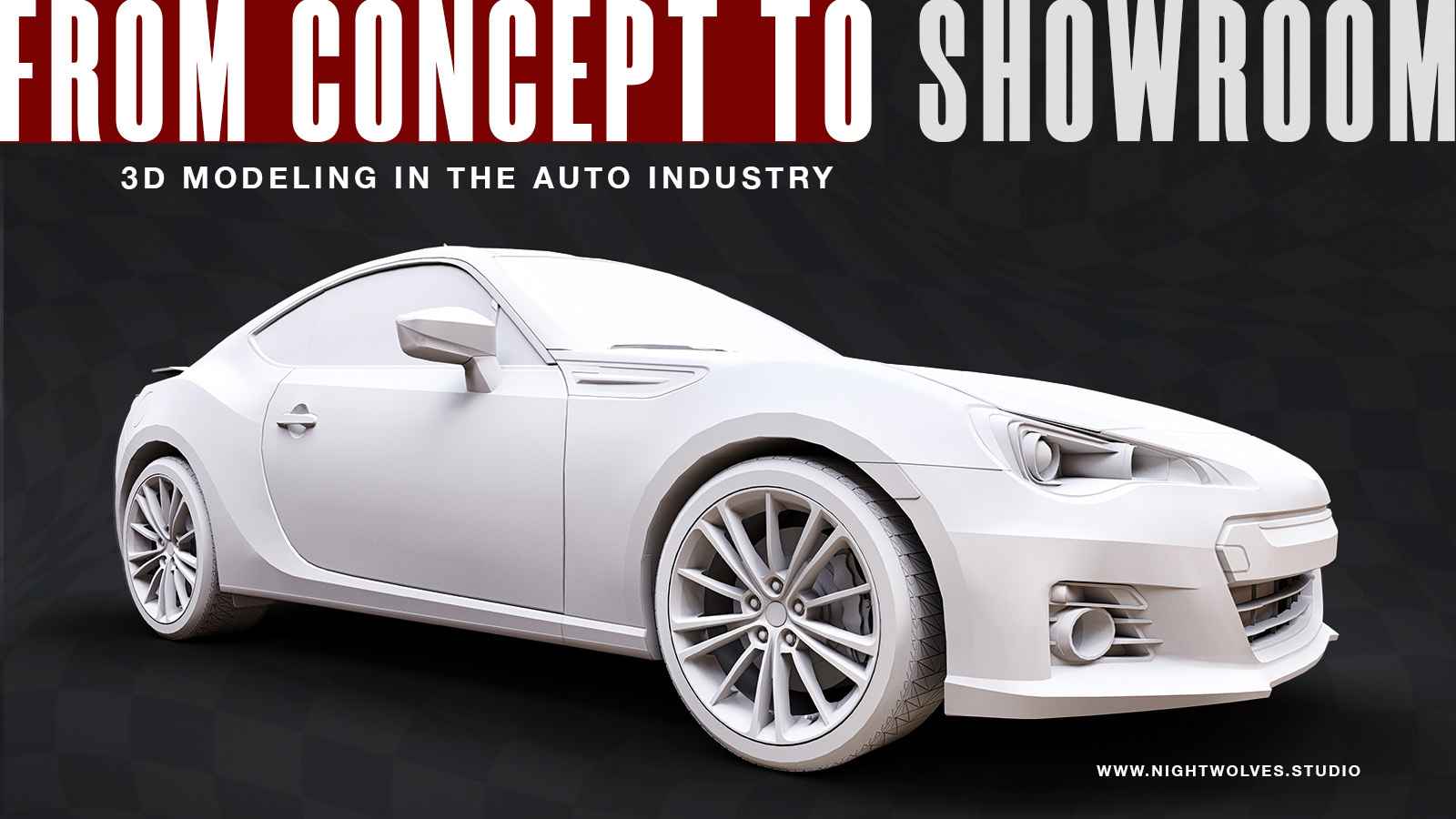The automotive industry has undergone a revolutionary transformation with the advent of 3D modeling technology. From initial concept sketches to showroom-ready vehicles, 3D modeling plays a crucial role at every stage of automotive design and production. This blog post explores how 3D modeling is reshaping the auto industry, streamlining processes, and enhancing creativity from the drawing board to the dealership floor.
Conceptualization and Design in 3D Modeling
In the early stages of vehicle development, 3D modeling software empowers designers to bring their ideas to life with unprecedented speed and flexibility:
- Rapid Iteration: Designers can quickly create and modify digital 3D models, exploring multiple design variations in a fraction of the time required for physical prototypes.
- Enhanced Creativity: The ability to visualize designs from any angle and in various environments sparks creativity and innovation.
- Improved Collaboration: Design teams can easily share and collaborate on 3D models, fostering better communication and idea exchange.
Virtual Prototyping and Testing
Once initial designs are created, 3D modeling enables virtual prototyping and testing:
- Cost Reduction: Virtual prototypes eliminate the need for multiple physical models, significantly reducing development costs.
- Faster Design Validation: Engineers can quickly identify and address design flaws through virtual simulations and analysis.
- Aerodynamics Testing: 3D models allow for computational fluid dynamics (CFD) simulations to optimize vehicle aerodynamics without wind tunnel testing.
Engineering and Manufacturing
3D modeling streamlines the transition from design to production:
- Precise Engineering: Detailed 3D models provide accurate specifications for manufacturing processes.
- Tool and Die Creation: 3D printing technology can produce tooling and fixtures based on 3D models, accelerating production setup.
- Quality Control: 3D scanning can compare manufactured parts to original 3D models, ensuring precision and consistency.
Marketing and Sales
In the final stages of bringing a vehicle to market, 3D modeling continues to play a vital role:
- Photorealistic Rendering: High-quality 3D renderings can be used in marketing materials before physical vehicles are available.
- Virtual Showrooms: Customers can explore and customize vehicles in immersive virtual environments.
- Augmented Reality (AR) Applications: 3D models power AR apps that allow potential buyers to visualize cars in real-world settings.
Case Study: Concept Car Development
The development of concept cars showcases the full potential of 3D modeling in the auto industry:
- Initial Sketches: Designers create digital sketches using 3D modeling software.
- 3D Model Development: Sketches are transformed into detailed 3D models.
- Virtual Reality (VR) Review: Design teams use VR to evaluate the concept car in a virtual environment.
- Refinement: The 3D model is iteratively refined based on feedback and testing.
- 3D Printing: A scale model or full-size prototype may be 3D printed for physical evaluation.
- Marketing: Photorealistic renderings and animations are created for public unveiling.
Conclusion
3D modeling has become an indispensable tool in the automotive industry, revolutionizing every aspect of vehicle development from initial concept to showroom floor. By enabling faster iteration, reducing costs, and enhancing creativity, 3D modeling is driving innovation and efficiency in auto design and production. As technology continues to advance, we can expect even more exciting applications of 3D modeling in the automotive world, further blurring the lines between digital concepts and physical vehicles.
Also Know More About
People Also Ask
1. How is 3D modeling used in the automotive industry?
Answer: 3D modeling is used throughout the automotive development process—from concept design to production. It allows designers to create digital prototypes, test aerodynamics, engineer components precisely, and generate photorealistic visuals for marketing and virtual showrooms.
2. What are the benefits of using 3D modeling in car design?
Answer: Key benefits include faster design iteration, reduced development costs, improved collaboration across teams, and the ability to test and validate concepts virtually. It also supports high-quality rendering for marketing before the vehicle is physically built.
3. How does 3D modeling impact automotive manufacturing?
Answer: 3D modeling helps streamline manufacturing by providing accurate blueprints for parts, tools, and dies. It supports 3D printing of components, aids in quality control through 3D scanning, and ensures better integration between engineering and production teams.
4. Can 3D modeling improve automotive marketing and sales?
Answer: Yes, 3D modeling plays a crucial role in marketing by enabling the creation of photorealistic renders and interactive experiences. Virtual showrooms and AR apps powered by 3D models help customers visualize and customize vehicles in real time.
5. What role does 3D modeling play in concept car development?
Answer: In concept car development, 3D modeling starts from initial sketches and progresses to detailed virtual models. Designers use VR to review models, refine based on feedback, and even create physical prototypes using 3D printing—all before public launch.
